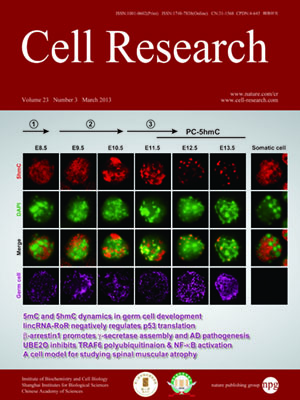
Volume 23, No 3, Mar 2013
ISSN: 1001-0602
EISSN: 1748-7838 2018
impact factor 17.848*
(Clarivate Analytics, 2019)
Volume 23 Issue 3, March 2013: 323-325
RESEARCH HIGHLIGHTS
Dendritic self-avoidance: protocadherins have it covered
Phuong Hoang1,2 and Wesley B Grueber1,2
1Department of Neuroscience, Columbia University Medical Center, 630 W. 168th St. P&S 12-403, New York, NY 10032, USA
2Department of Physiology and Cellular Biophysics, Columbia University Medical Center, 630 W. 168th St. P&S 12-403, New York, NY 10032, USA
Correspondence: Wesley B Grueber(wg2135@columbia.edu)
Dendrites exhibit self-avoidance, in which branches of the same neuron repel each other while overlapping with branches from neighboring neurons. A recent paper by Lefebvre and colleagues reveals that clustered protocadherins provide a basis for neuronal recognition during dendrite self-avoidance in vertebrates.
Cell Research (2013) 23:323–325; doi:10.1038/cr.2012.137; published online 18 September 2012
FULL TEXT | PDF
Browse 2239


